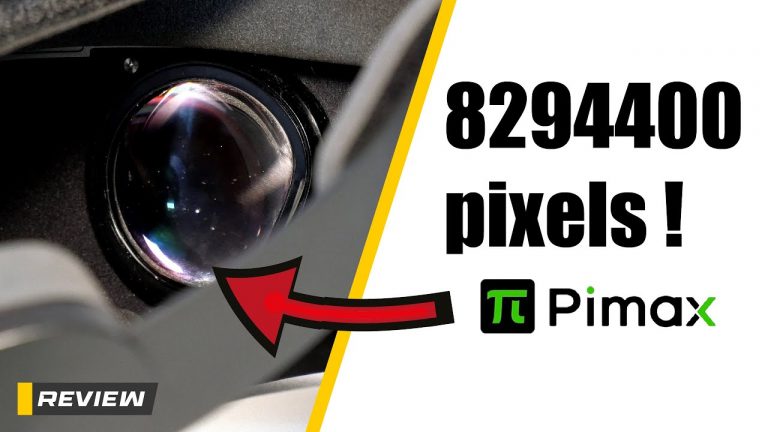I. Introduction
The Pimax Crystal succeeds two generations of VR headsets and introduces a new hybrid range: classic PCVR headset (with a cable connected to the computer, SteamVR compatible, the great classic), but also Standalone: the headset is capable of operating autonomously without a PC. With the 8KX, the second generation offered a 180° FOV. The crystal offers a FOV (field of view) in line with the market average, and we’ll have to wait for the 12K to enjoy a wide field of view once again.
This choice leads to our question: is the return to a conventional field of view justified by the incredible gain in sharpness provided by the Crystal’s screen: 2880×2880 per eye!
Get 20$ OFF with the code lebois20 !
II. Concept and Design
Design
The Pimax Crystal uses an evolution of the previous-generation housing. It’s big. That’s said. Considering the size of the screen and the FOV, it’s not justified, but you have to understand that it’s this housing that will also house the incredible 12K screen, which as its name suggests, will offer 6000 pixels wide per eye! So yes, it’s an unfavorable compromise for the Crystal. The strap has been slightly revised. The front panel is designed to be interchangeable with a Lighthouse tracking faceplate (see “Tracking in space”).
The case features three USB ports for future module mounting. The lenses are designed to be removable too.
Build quality
Like the previous generation, this headset is designed to be modular. In my opinion, this is a mistake (it was already a mistake on the previous generation), as it makes this headset much more complex to build: you have to make sure that certain parts can be disassembled, while ensuring that the assemblies have no play… In particular, I find that the faceplate attachment isn’t completely satisfying. The question remains as to whether the modules to be offered will justify this choice. A faceplate for a different space tracking mode and a Wifi module are currently planned, and we hope to be able to test them!
So yes, the perceived build quality is below the competition. But no other headset on the market offers so many features and is so upgradeable.
Installing the battery, on the other hand, is rather tedious: there are two clips that are difficult to push in. This is something that needs to be corrected.
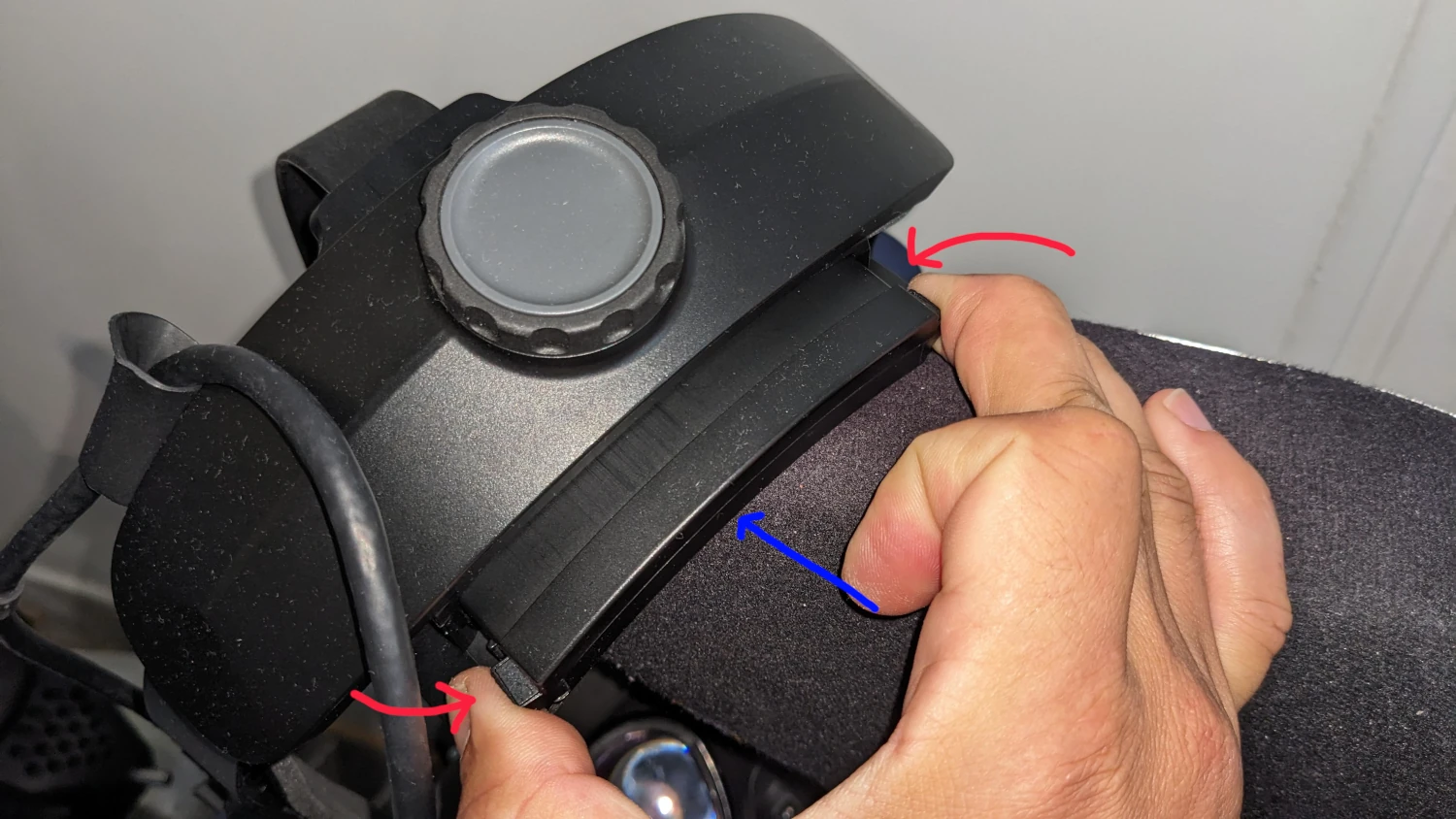
Pimax obviously reuses the cable from the previous generation, except that the cable from the previous generation didn’t need to be easily plugged/unplugged. This is a real problem, as this cable is not fitted with a coding device. So you have to follow the diagram above to avoid making a mistake (don’t worry, you won’t damage the cable if you insert it the other way round). It’s little things like this that make the difference.
Confort
The headset is heavy, weighing in at 1001g. Clearly the heaviest headset on the market. Again: so many features, it weighs a lot! However, in seated use (Sim Racing), this didn’t bother me. I run endurance races with them, and that’s not where I get tired. The 120g battery installed on the back of the headset spreads the load, and I repeat: the weight doesn’t bother me.
On the other hand, the weight will probably be a disadvantage for standing games where the head moves faster: at this point, the inertia implied by the weight generates movements of the headset in relation to the head. In my opinion, this headset should be understood as dedicated to seated gaming.
Besides, the headset is equipped with foam pads that do their job. The strap is tightened at the back and is effective. The nose is fitted with an interesting flap system, and there are no light leaks.
Battery
The headset comes with two batteries and a charger. Use of the battery is mandatory.
When the headset is not in use, the cable also recharges the battery.
When the headset is plugged directly into the PC, count on a good two hours of autonomy.
When the headset is plugged into the Power Hub, autonomy rises to 6 hours.
6 hours is already very substantial, and minimizes battery management. Obviously, for pure Sim Racing use, this battery is a disadvantage. But it’s important to take a step back and understand the positioning of the headset: there are now many PCVR/Standalone headsets. But they’re all much more standalone-oriented than PCVR. As a result, in PCVR mode, the image is often degraded, and the connection difficult to establish. Quite the opposite of the Crystal, which is positioned above all as a PCVR headset while offering the possibility of being used in standalone mode.
And this standalone mode is VERY important to me. You have to have tried it to understand it: it’s a whole new freedom, a new way of playing, for everyone! You can face the sofa and play ping pong, or go out into your garden and shoot zombies. This wasn’t possible with the previous generation, which had to be connected to the PC, install bases and so on… I even went on vacation with my headset.
Alors oui on se dit : “moi je ne fais que du Sim Racing, je n’ai pas besoin du standalone”, mais l’essayer c’est l’adopter ! Et c’est au pire des cas une excellente plus-value en cas de revente.
Tracking in space
The headset’s spatial tracking is of the “Inside-Out” type, i.e. 4 cameras located on the headset that track the headset and controllers: again, this weighs a lot. There’s a lot of hype around the Big Screen, which weighs just 127g, but this one uses Lightouse tracking, which requires the use of external bases that are tedious to install.
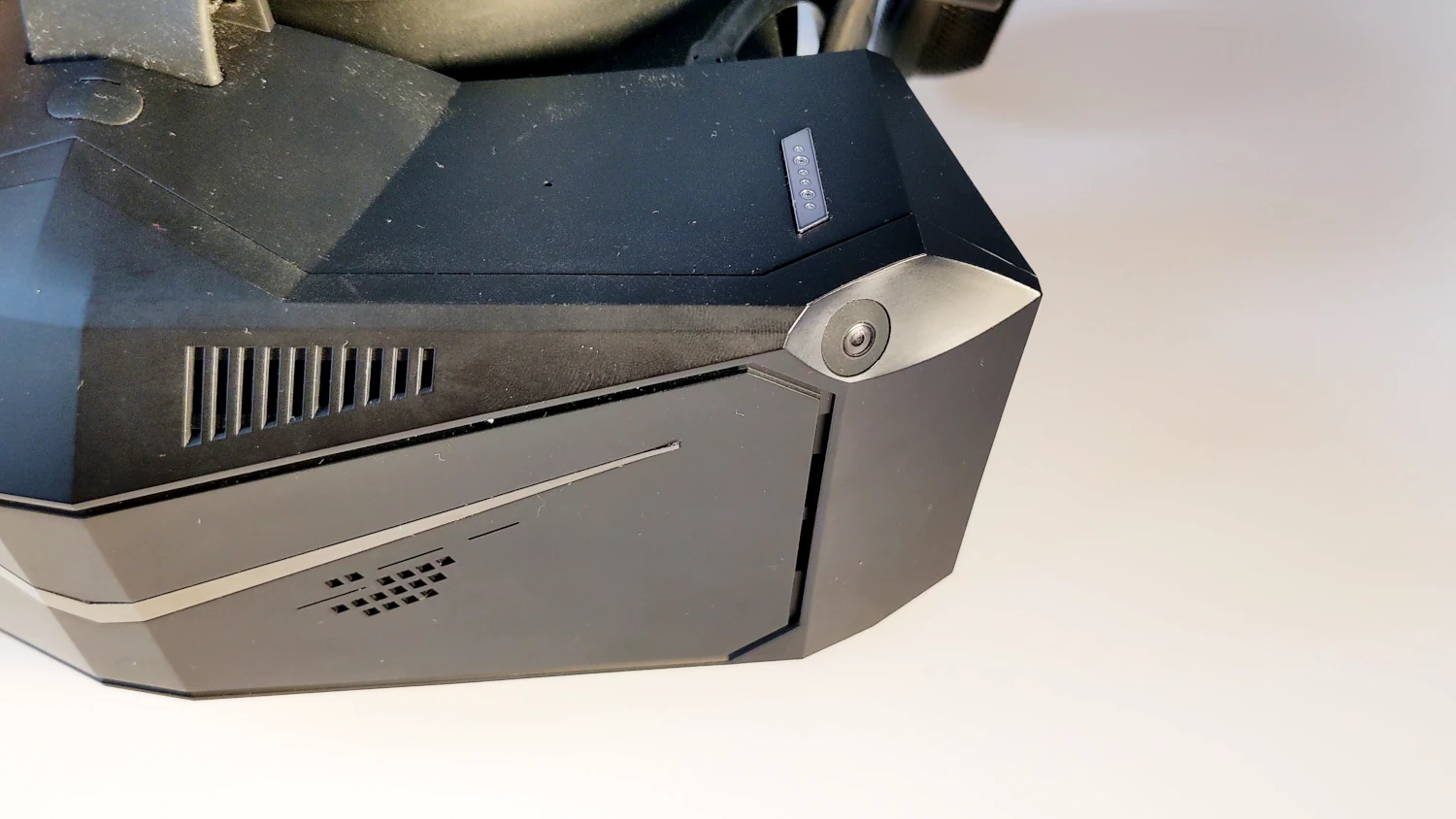
Tracking in space is fluid and I couldn’t fault it, even in a tight space like my simulator.
Note that it will be possible to swap the front panel for one featuring Lightouse tracking, the SteamVR solution: the headset is tracked by two bases located at the corners of the room. Honestly, the only point of this solution is to better track the controllers. A limiting use case for Inside-Out is when you’re archery: the hand holding the bow ends up behind the headset and is generally poorly tracked. It’s a compromise I’m happy to make, as it’s such a pain to install the Lighthouse bases.
III. Visual performance
Image quality
That’s where Crystal shines! 2880×2880 per eye! That’s the highest resolution on the market (along with the 8KX). Except that, as the field of vision is reduced, sharpness is enormously improved! It’s as close to human vision as you can get: you can see the fence mesh as far as you’re supposed to in real life. The number of pixels per degree of field of view is so high that they become indistinguishable, and even with an average graphics setting, you can’t distinguish pixels. It’s a big step forward in this respect. On the other hand, the headset requires a relatively powerful graphics card. I’m using a 4080, and that seems just about right for enjoying the headset.
Lenses
The Pimax Crystal uses interchangeable glass lenses: the default setting is 35PPD (pixels per degree), and Pimax will also be shipping a second set at 42PPD (you gain in sharpness but lose in field of view). Once again: the fact that the lenses are interchangeable inevitably makes the body heavier and more complex. Note that even though the mounting solution is very clean (a screw and several magnets fix the lens), I didn’t really enjoy making the change, as you’re bound to be afraid of getting dust into the headset.
There’s no problem with rays of light – they’re perfectly controlled.
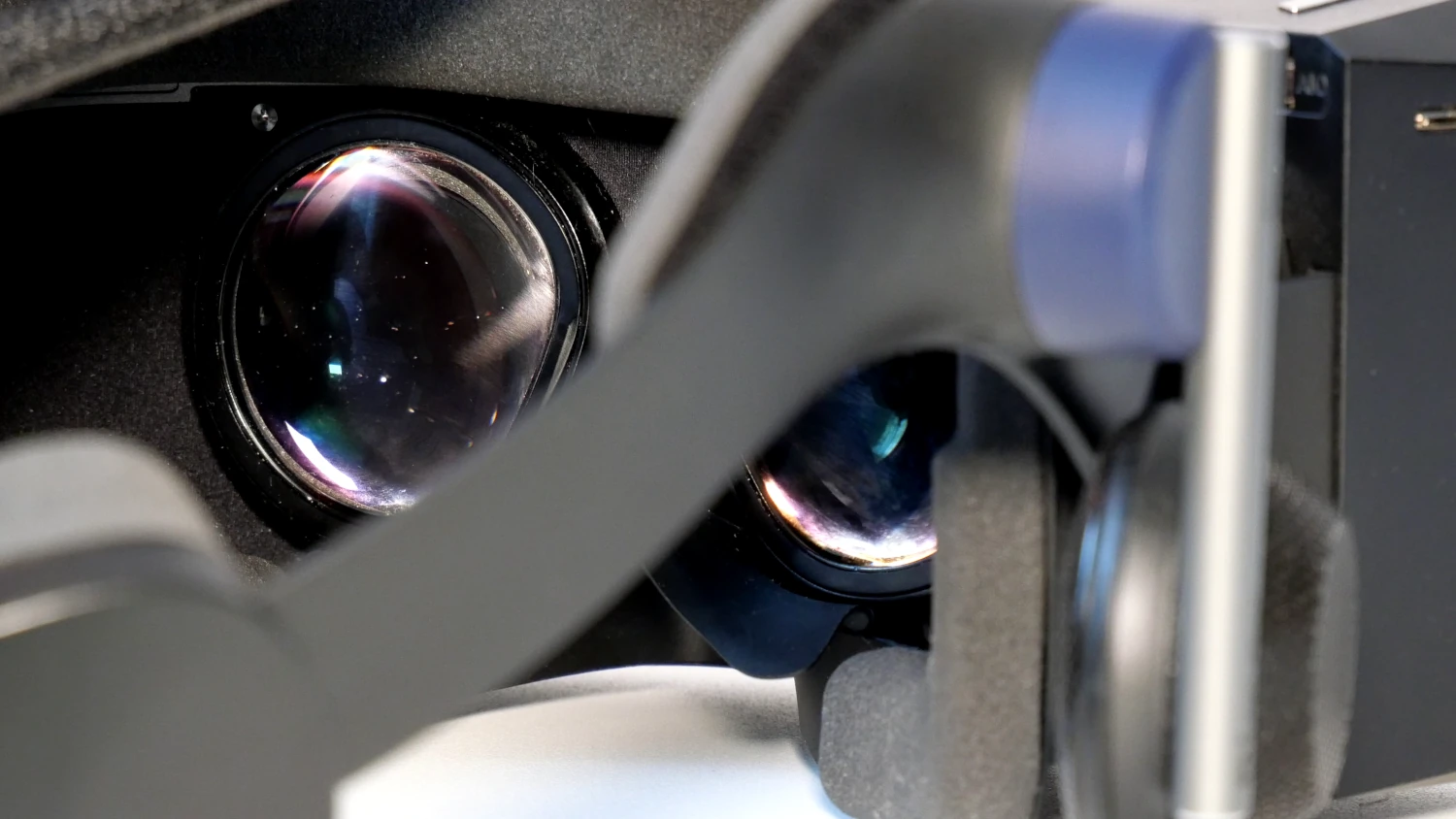
Field of view (FOV)
The Pimax Crystal’s field of view is given as 140° diagonal. Not immediately easy to get used to when coming from an 8KX, but the field of view remains wide compared with the competition. On the other hand, the 2880x2880p panel implies a rather square fov, which is less natural than rectangular fields of view.
Colors and contrast
Once again, this is one of the Pimax Crystal’s strong points: as much as I’ve become used to the very high sharpness, every time I put on the headset, the color quality continues to surprise me: it defies all competition! Vibrant colors are… vibrant, dull tones are dull and blacks are perfect. It makes the old generation aged. Combined with the increased sharpness, this creates an image that’s truly pleasing to the eye. And once again, a picture that’s close to reality.
Fluidity
The Pimax Crystal’s default setting is 90Hz, and a 120Hz beta mode is also available. The latter mode has never posed a problem for me, and can already be offered in the final version. This was a shortcoming of the 8KX, which for me was only stable in 75Hz. Few headsets offer more than 90Hz, and there are even plans to go beyond 120Hz. This makes the headset very upgradeable. This reminds me of the 5K+, which can go up to 144Hz, making it very upgradeable (to generate images in VR at 144Hz, you need to be well equipped!).
Features
To take the load off the graphics card, the headset features eye tracking. In theory, this enables image degradation where the eye is not looking. The solution works at 120Hz and is impossible to fault. This is a very positive point. Unfortunately, there’s no gain on steamVR, so you have to use the open source OpenVR solution to get gains of up to 10% on compatible titles…of which there aren’t many:
10% on RF2, works perfectly
10% on ACC, but with some glitches on the edges (in the stands or on the grass)
10-15% on Iracing, works perfectly (I’m not the one who tested it)
0% on AMS2.
We hope that the integration of this solution will progress, because it really is a 10% gain in fps WITHOUT ANY VISUAL LOSS!
IV. Audio performance
The headset is once again available with two audio solutions: the standard (SMAS) and the Deluxe (DMAS). I personally tested the Deluxe, and found it very convincing. You’d really have to be an inveterate audiophile to feel the need for dedicated headphones.
V. Ease of use
The driver : Pimax Play
The new software gave me no trouble at all, and immediately detected the headset. In the background, it’s the second-generation Pitool that you find when you click on “settings”.

Auto-IPD
Eye tracking also activates Auto-IPD: the automatic adjustment of lens positioning. It’s a perfectly fine-tuned feature, which also enabled me to determine that my ideal IPD is 63.4mm. Lens position adjustment is therefore motorized… again, this adds weight.
Headset buttons
There are several buttons on the top of the headset: sound adjustment, power button, lens position adjustment (when Eye Tracking is deactivated). Some users have complained that the positioning of these buttons isn’t ideal, since they’re right where you put your fingers when you’re handling the headset. Personally, I’m happy with them.
There’s also a button for switching from PCVR to Standalone, which is very welcome: indeed, on all the Standalone/PCVR headsets I’ve used, it’s always complicated to switch from one mode to the other.
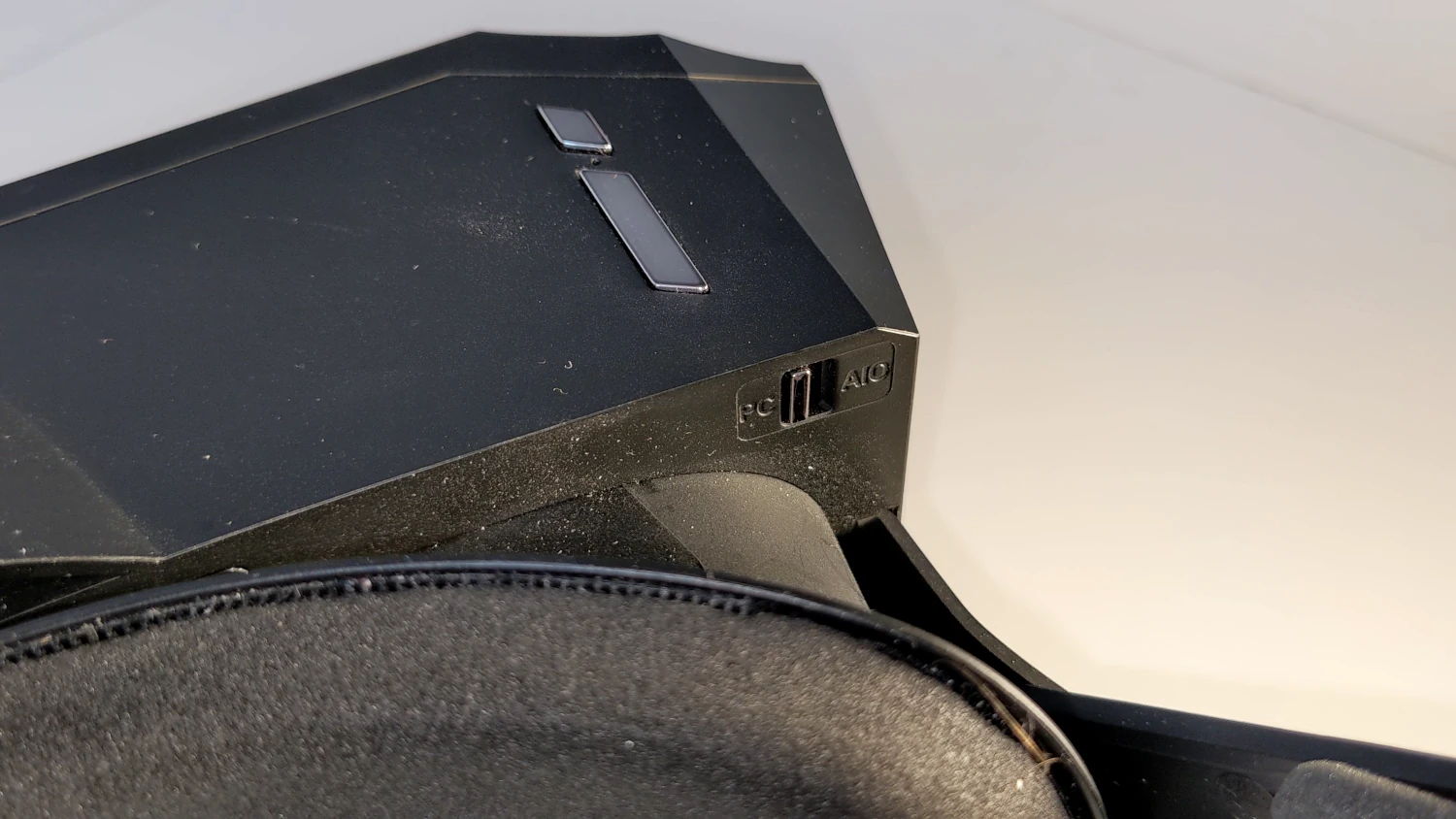
VI. Trackers
The headset comes with two satisfying joysticks. The battery is integrated and recharges via a USB-C port. It’s just what you’d expect. Once again, build quality isn’t mind-blowing, but once in hand, there’s not a single plastic flaw to be found.
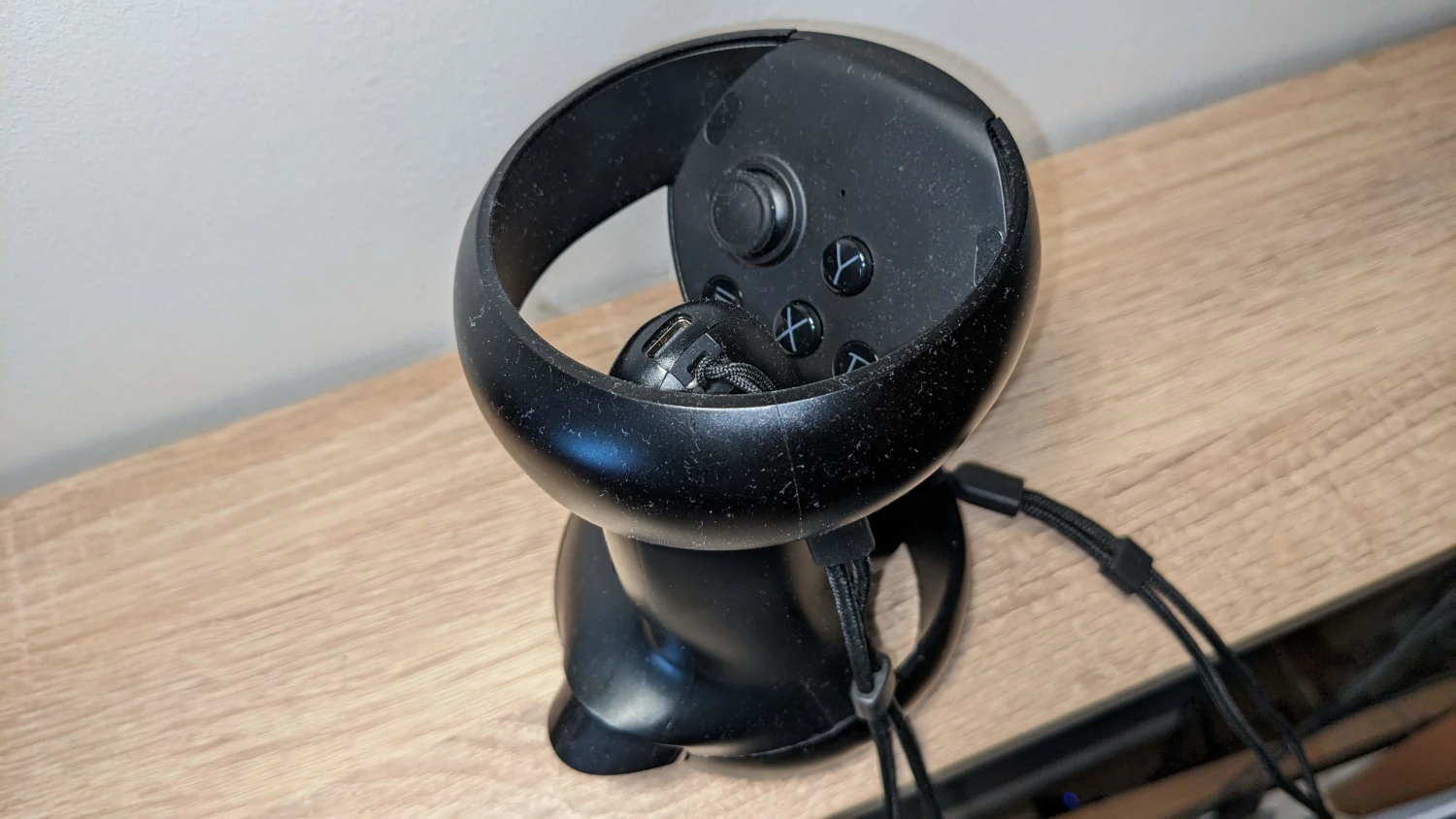
VII. Conclusion
So, is this new generation of virtual reality headsets up to the challenge? As we’ve seen, the Pimax Crystal is not without its faults. But the real question is what this headset is really worth once it’s on your head: and here I have to admit that, between the colors, fluidity and sharpness, the experience is truly superior to any I’ve ever experienced. This headset takes us one step closer to reality, and that’s what simulation fans will probably decide for themselves!
Final review :
Final review :- Quality3/5 NeutralIt's not a clear improvement on the previous generation. The headset is certainly sophisticated, but some details should be improved for the price.
- PICTURE QUALITY5/5 AmazingIt's impossible to put less, it's perfect!
- SMOOTHNESS5/5 Amazing90Hz is fine. Anything more is luxury. And even 120Hz is out of the question with today's generation of graphics cards.
- Confort4/5 GoodThe headset is heavy but wears well nonetheless.
- FOV3/5 NeutralA step down from the previous generation for a much higher price... But we'll forgive it, because the image quality is incredible!
The Good
- Crazy clarity!
- Upgradeable: a better graphics card will give you a better image
The Bad
- Build quality
- Mostly build quality
